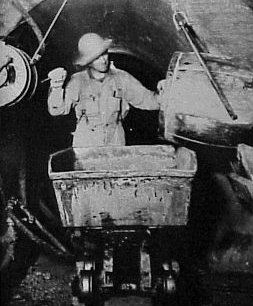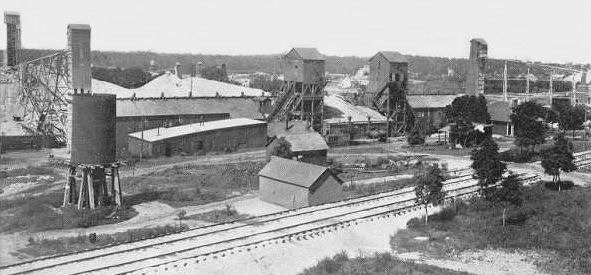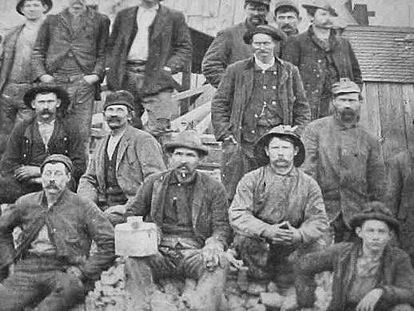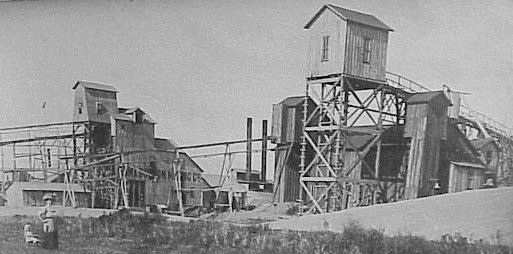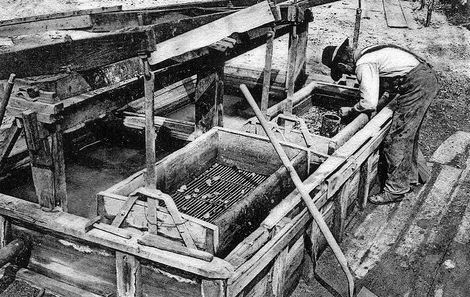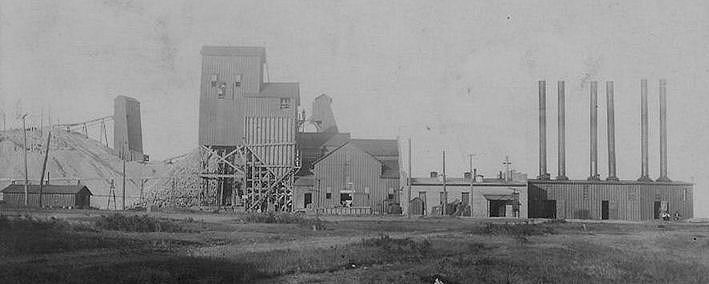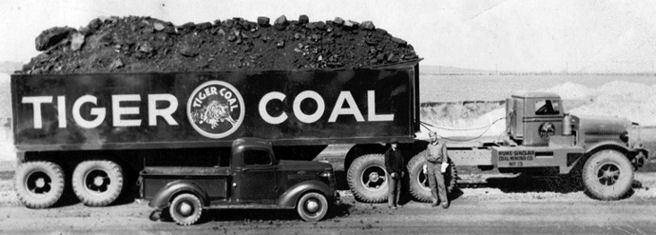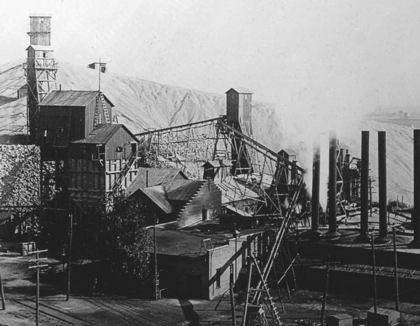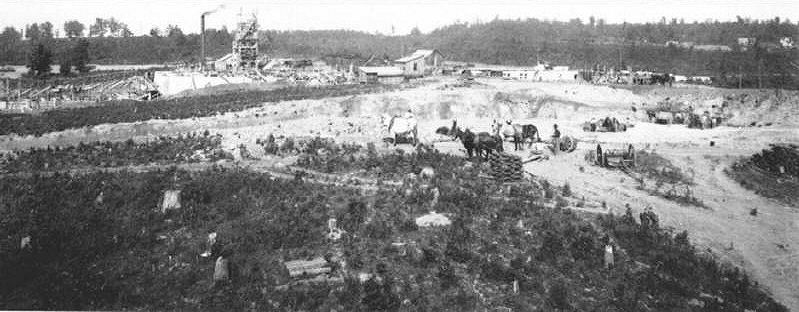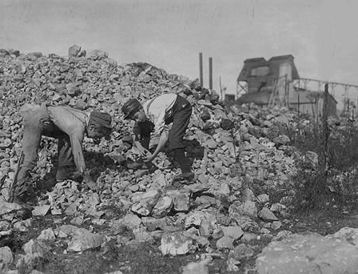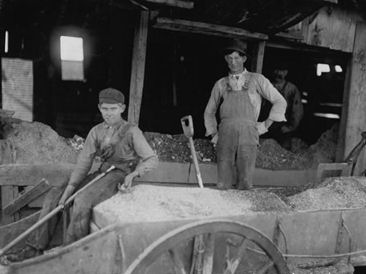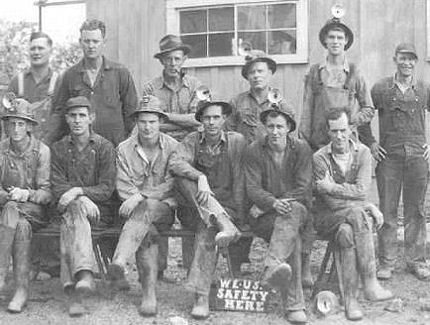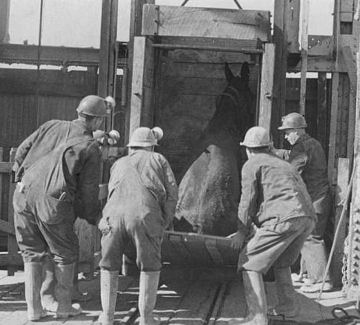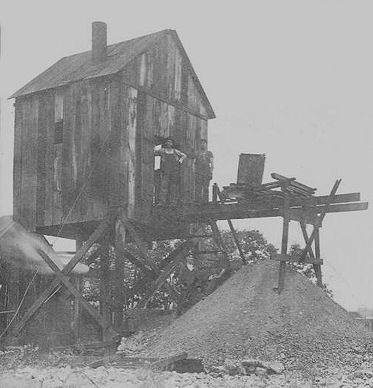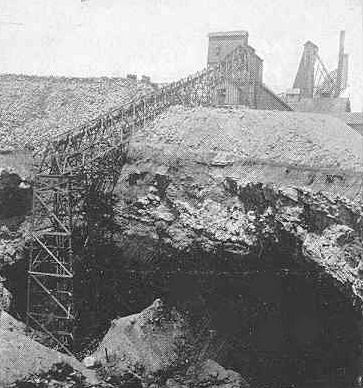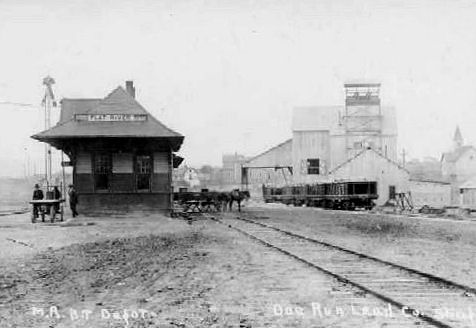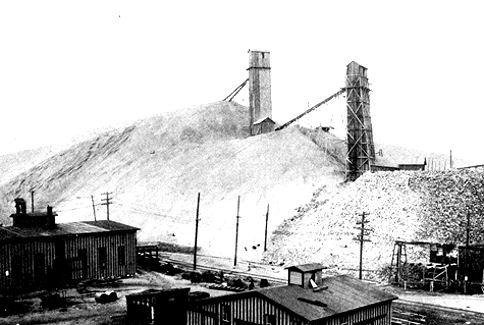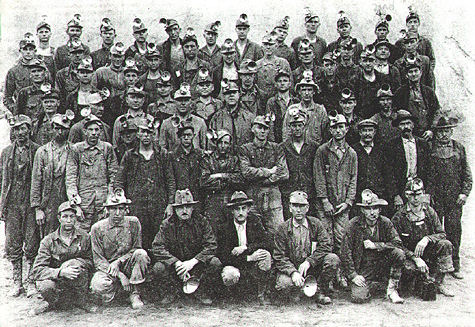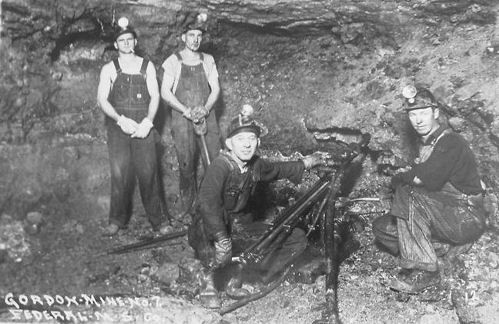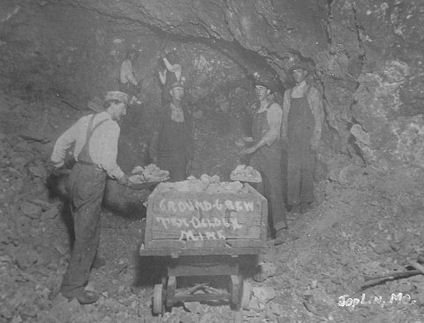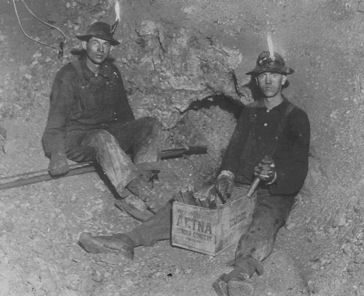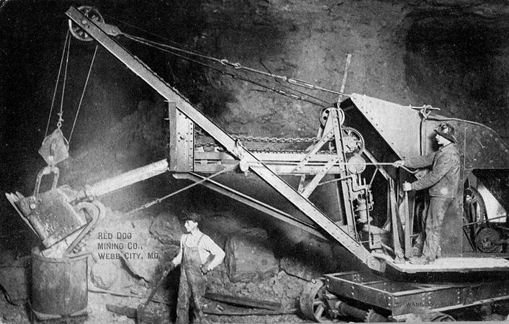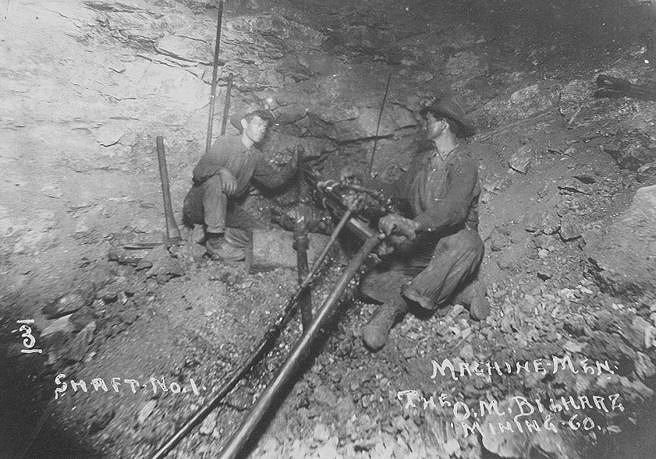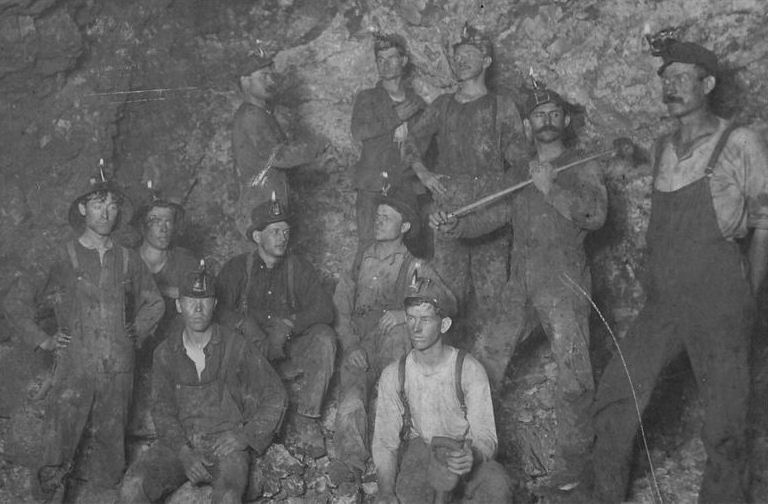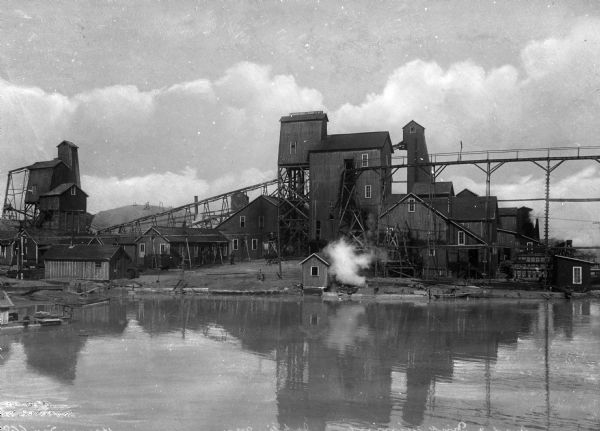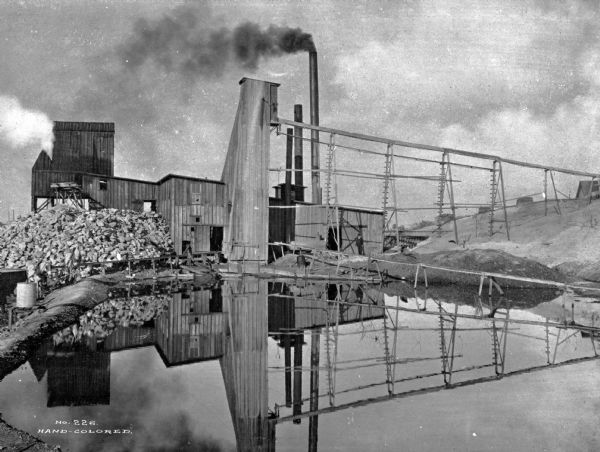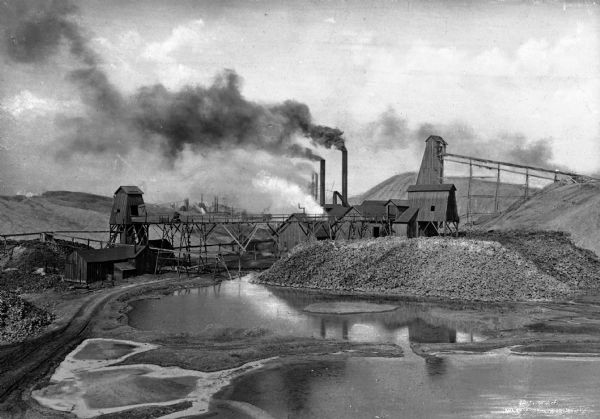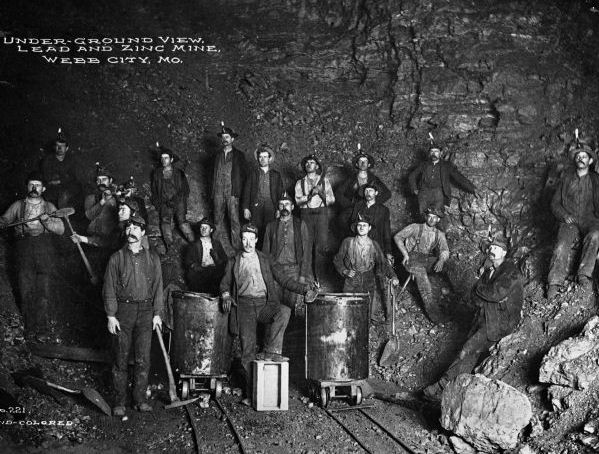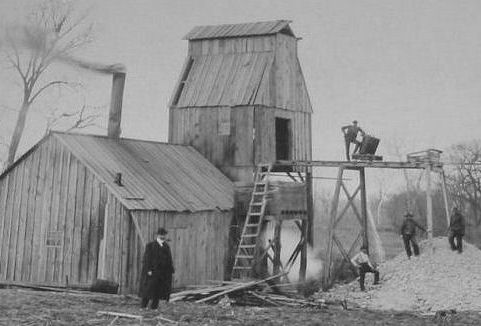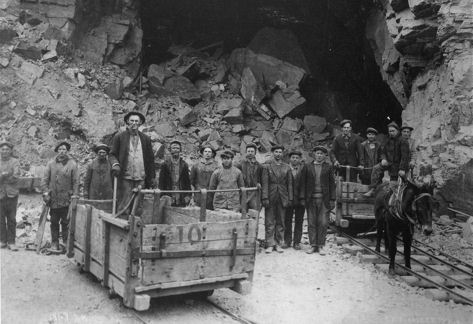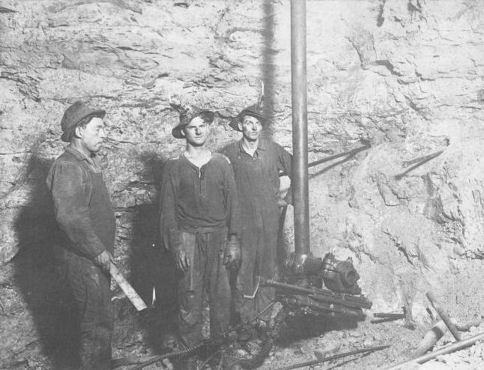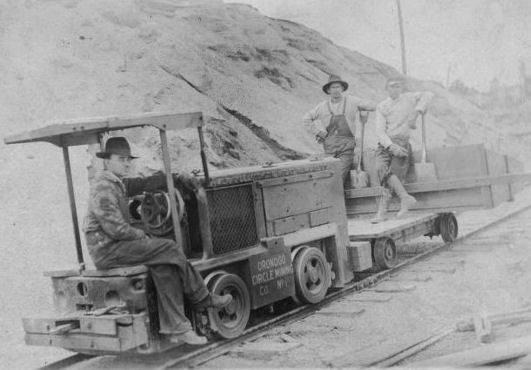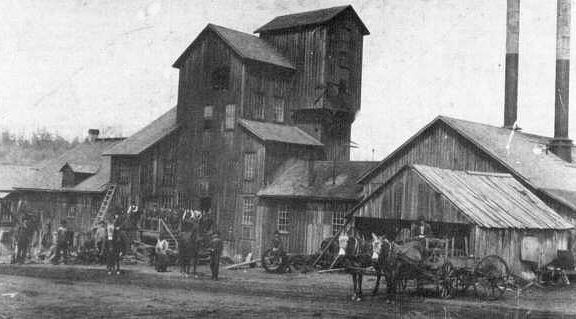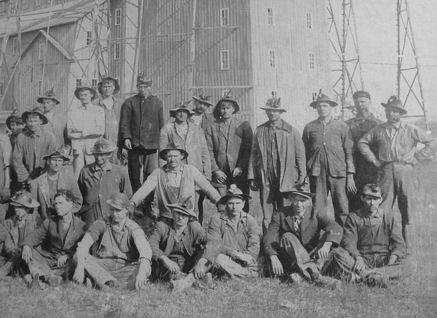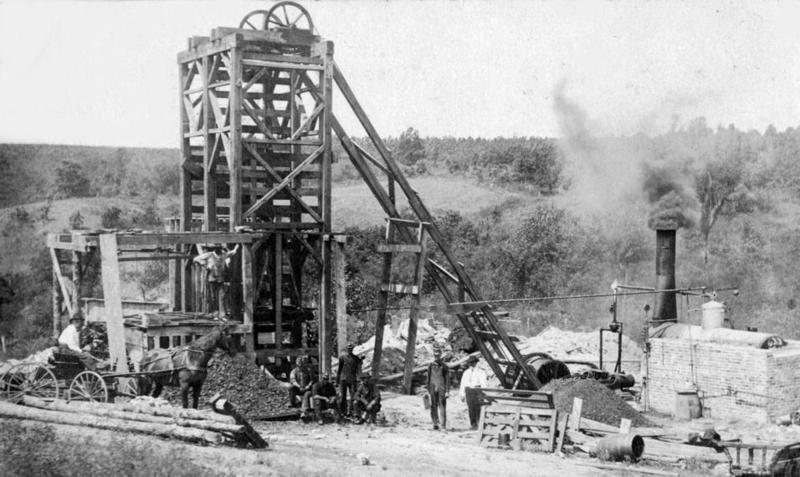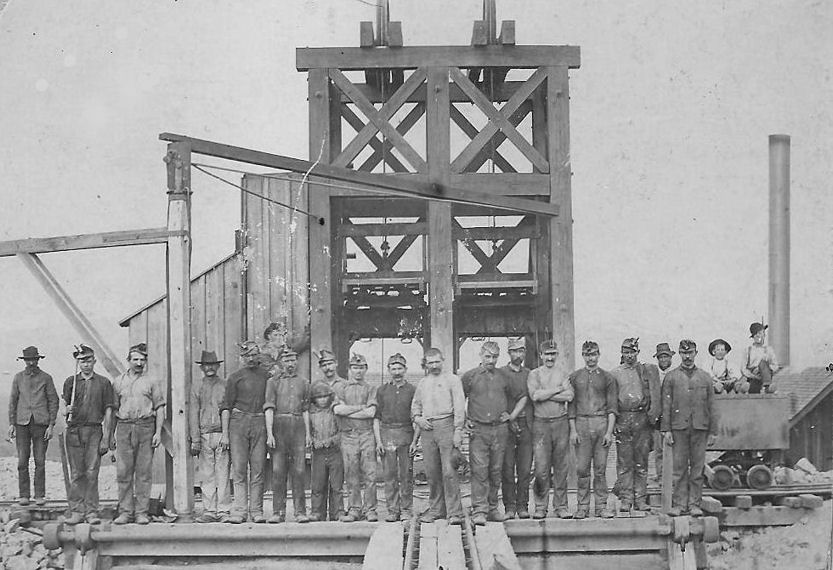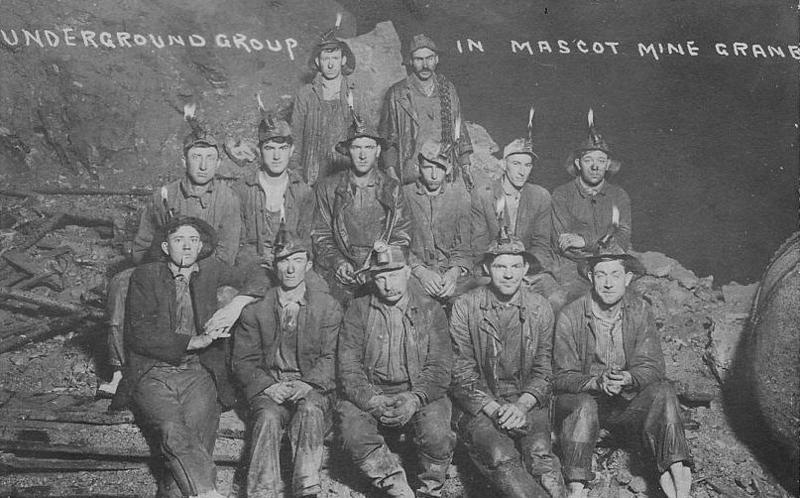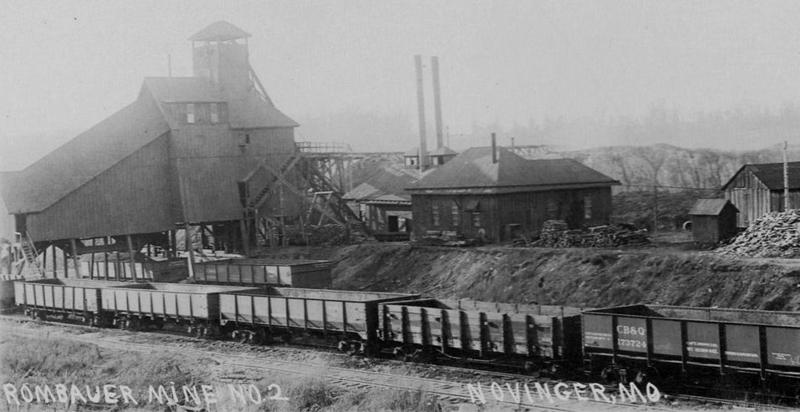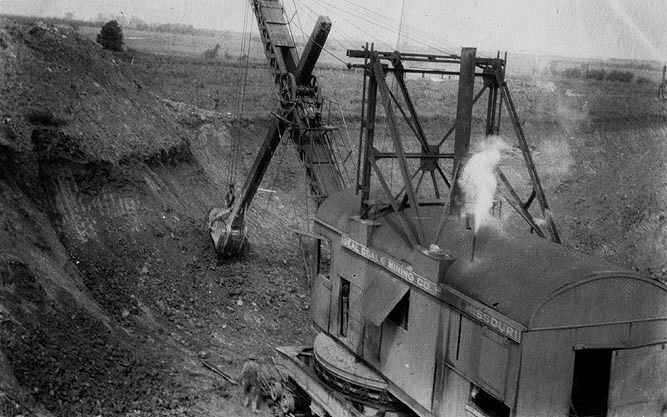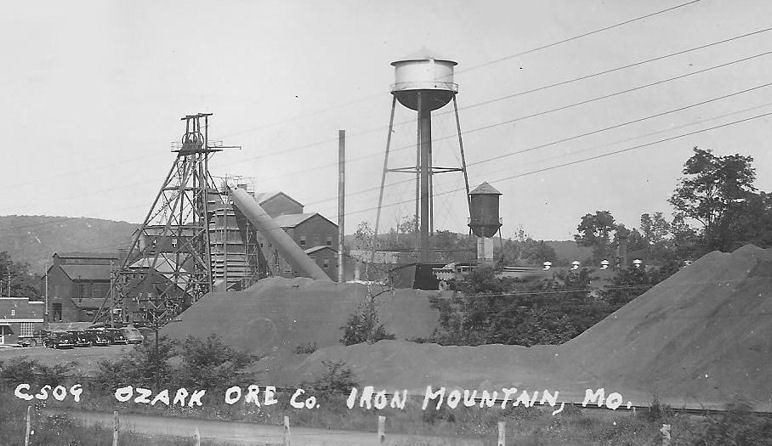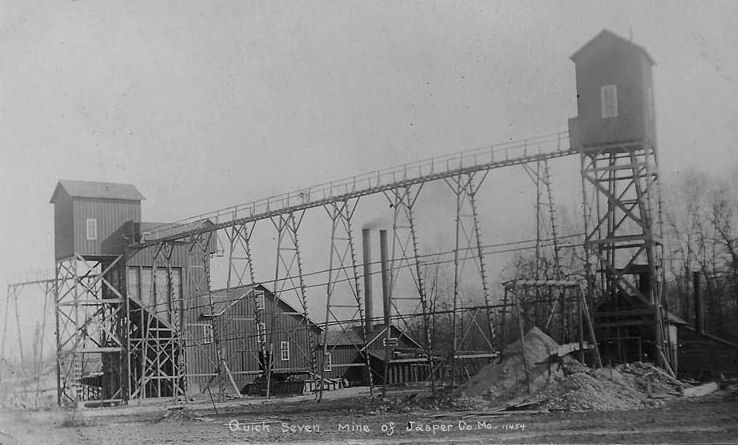MISSOURI MINES
Yellow Dog Mine - Webb City, Missouri
Yellow Dog Mine - Webb City, Missouri
Spotcash Mine - Missouri
Unidentified Missouri Lead Mine
Lead mining exploration in Missouri began with French explorations along the Meramec River and in the St. Francois Mountains of southeastern Missouri in about 1700. In 1720, Philip Renault led an expedition that resulted in the opening of Mine La Motte in Madison County. The first mines were mostly surface diggings opened by manual labor with pick and shovel. By 1725, Old Mines and Mine Renault were opened in Washington County. In subsequent years, lead mining was conducted on a small scale in St. Francois County, beginning about 1742 and Mine a' Burton, in 1763, at present day Potosi, in Washington County. It was not until 1842 that the Valle Mines were opened in northern St. Francois County. The Civil War fueled an increased need for lead. The St. Joe Lead Company was formed in 1864 to open and operate the Bonne Terre Mine and Flat River Mine in St. Francois County. The St. Joe company closed the Bonne Terre mine in 1962 and concentrated operations to the south. The mines throughout this Old Lead Belt area ranged from surface mines to mines that extended several hundred feet below the surface. Production of these early mines was sufficient to meet needs for about next 100 years. The only mine of significance to be opened during this period was the Annapolis Mine, which opened in 1915.
By the 1940s, lead reserves in the Old Lead Belt on the eastern side of the St. Francois Mountains were seriously depleted and the exploration for new lead reserves moved to the western side of the St. Francois Mountains. Economic ore bodies are not near the ground surface in this area, but are present at depths ranging from about 500 feet to 1,500 feet below the ground surface. Lead ore was discovered near Eminence in the late 1950s, and in the Viburnum Trend area in the 1960s. The Viburnum Trend discoveries were shallower and were, therefore, developed first. Ten mines were eventually opened in the Viburnum Trend from the extreme southern edge of Crawford and Washington Counties to west central Reynolds County. The mines include Viburnum 27, Viburnum 28, Viburnum 29, Casteel, Magmont, Buick, Brushy Creek, West Fork, Fletcher, and Sweetwater.
Lead was discovered in the Joplin Creek Valley before the Civil War, but it was only after the war that significant development took place. By 1871, numerous mining camps had sprung up in the valley and resident John C. Cox filed a plan for a city on the east side of the valley. While Joplin was first put on the map by lead, it was zinc, often referred to as "jack", that built the town. By the turn of the 20th century, Joplin, in the center of the Tri-state district, became the lead and zinc capital of the world. Due to underground mining, Joplin is nearly 75% undermined.
In 1897, soaring prices and continued active demand produced large profits for mines in the Joplin district, and the following year was one of the most prosperous in the history of zinc mining.” This boom in lead and zinc mining attracted the attention of wealthy Eastern investors. In 1899, a group of Boston capitalists formed a corporation they called American Zinc, Lead, and Smelting Company. American Zinc, as it was commonly known, became one of the major players in the Tri-State Mining District.
Webb City, now principally a suburb of Joplin, was once a large corn and wheat farm belonging to a man named John C. Webb. When Webb discovered lead in his corn field in 1873, he took on a partner and began to mine. However, the mine continually filled with water and Webb, discouraged, sold his interest to an experienced miner two years later.
Moving in another direction, Webb platted the town of Webb City in July, 1875 when miners began to flood the area. Soon mines surrounded the town and between the years of 1894 and 1904, they produced 23 million dollars in lead and zinc, though they wouldn’t reach their peak until 1918. Mining continued in the area until after World War II. While most of the miners made their homes in nearby Joplin, filled with gambling halls, saloons, and brothels, the mine owners made their homes in prosperous Webb City.
Hand Jigging - Joplin, MO
American Davey Mine - Prosperity, MO
Mine No.1 Hume-Sinclair Coal Co. - Hume, Bates Co., MO
Joplin, MO Mine
Bonne Terre, MO shaft and surface mine 1860s
Federal Mine - Duenweg, MO
Culling Waste at the Coleman Bros Zinc Mine - Aurora, MO
St. Francois County Miners lowering a Mule
Daisy Bell Mine - Aurora MO
Lead mine - Webb City, MO
Daylight Mine - Joplin, MO
Miners - St. Joseph, MO
Federal Mining & Smelting Co. Gordon Mine No. 7 - MO
Ten O'Clock Mine - Joplin, MO
Lead Mine - Carterville, Jasper Co., MO
Doe Run Lead Co. Shaft No.1 - Flat River, MO
Blasting - Webb City MO
Red Dog Mining Co. - Webb City, MO
Lead-Zinc Mine - Joplin, MO
Lead-Zinc Mine - Joplin, MO
Lead-Zinc Mine - Joplin, MO
Missouri Lead & Zinc Co. - Joplin, MO
Lead & Zinc Miners - Joplin, MO
The most important source of iron ore in Missouri has been the Precambrian core area of the Ozark Uplift in Iron County, which began producing iron ore in 1815. In 1843 Conrad C. Zeigler and James Harrison, having purchased the equity of the former owners, obtained a charter for the American Iron Mountain Company which was incorporated by the Missouri legislature. In 1845 Zeigler and Harrison conveyed the interests which they had acquired and vested title to the property in the American Iron Mountain Company.
It was in 1855 that the St. Louis and Iron Mountain Railroad Company was constructed and a right of way deed was recorded by which the American Iron Mountain Company conveyed a right of way over its lands for railroad purposes. Until 1871 the terminus of the railroad was at Pilot Knob, Missouri. Prior to this time there was no railroad, and the only outlet to market was by wagon eastward forty miles or so to the river. About midway between Iron Mountain and the river, furnaces were built for the reduction of the ore, and these were operated for many years under the name of Valley Forge. The forge, however, was a part of the Iron Mountain enterprise; the ore was laid upon wagons, hauled to the forges, there converted into blooms and then transported to the river to be distributed throughout the Mississippi Valley.
It is a matter of record that early operations were primitive. The ore was picked from the crest of the mountain in chunks, trundled down the mountainside on tramways and laid on the cars ready for shipment. Pick and shovel dislodged the masses. Gravity furnished the power, for the loaded car getting down, pulled the empty one up. That was picking up dollars. One workman was good for six or eight tons a day. Ore was worth nine and ten dollars a ton, and 100 cars a day left the mines for the furnaces. There were periods when the shipments went over 1,000 tons a day.
The Pea Ridge Mine in Washington County, owned by the St. Joe Domestic Metals Corp, a subsidiary of the Fluor Corp. produced 1.3 million tons of ore pellets. It was once the largest operating underground iron mine in North America. The mine opened in 1961 and was closed and flooded in 2001.
Iron Mine - Pilot Knob, Iron Co., MO
Missouri currently produces less than two percent of the coal in the United States but it has a history of commercial coal mining predating the Civil War. Missouri began mining coal in the 1840s and was the first commercial coal mining state west of the Mississippi River. Most of the early mines were underground and have since been abandoned. Surface mining didn't start in Missouri until the 1930s. By the '1960s, the majority of the coal produced in the state came from surface mines.
Oronogo Circle Mining Co. Joplin, MO
Drilling blasting holes - Joplin, MO
LaMotte Mine - Fredericktown, MO
Sunnybrook Mine - Joplin, MO
Coal Mine - Kirlsville, MO
Iron Mine - Iron Mountain, Missouri
Mascot Mine - Granby, Newton County, MO
Strip mining near Hume, MO
Quick Seven Mine - Jasper County, MO
